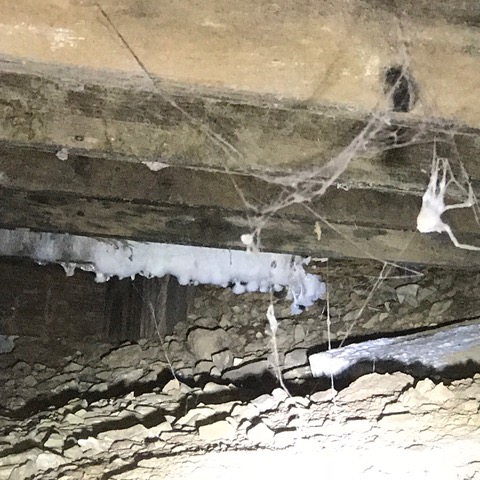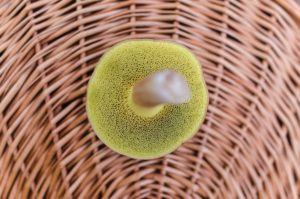Last month we explored ways to avoid and fix water damage in your home. This time around we’ll discuss mold – what it is and some tips to keep it under control.
What is mold?
A member of the fungus family, mold is found everywhere in nature. Outdoors, mold is responsible for breaking down and digesting dead plants, trees, and even dead animals. Without mold the world would be piled to the sky with dead matter that could not decompose. So in the broader sense, mold is an important part of our ecosystem. Mold thrives in moisture and multiplies through tiny spores that float through the air. Everywhere you go, you’re exposed to mold. In small amounts it is generally harmless, but let it take root in your home and multiply out of control, mold spores can put your health at risk, especially if you are allergic or sensitive.
Mold in your home
Mold needs two things to survive and thrive: food and moisture. So what does mold eat? Nearly everything! Walls, carpets, glue under floors, furniture, drapery – if you can name it, then it’s likely that mold finds it yummy.
Since moisture is so important to mold’s lifecycle, you are most likely to find it in your home’s damp places such as bathrooms, basements, kitchens, laundry rooms, and crawl spaces.
Tips for mold control
Can you kill or eliminate all mold and spores in you home? The answer is no. However, since mold cannot grow without dampness, reducing moisture is the best way to keep mold growth in check. If you see mold in your house, it’s important to remove it, but if you do nothing to reduce or eliminate the dampness, mold will soon return. Here are some tips for the places in your home most susceptible to mold growth.
- Keep indoor humidity below 60%. If you have a central heat pump or A/C unit, this should not be a problem. Keep drain pans clean and dry in your HVAC system, or they can be a source of mold.
- No A/C or heat pump? Use a dehumidifier. Click here for some dehumidifier reviews.
- Keep your home warm when outside temps drop. Colder air holds less moisture, so wetness condenses on surfaces, providing ample fuel for mold growth.
- Dry damp or wet areas as quickly as possible (within 24 hours) to prevent mold growth. If moisture condenses on certain windows in your home, keep a towel handy to dry them off.
- Avoid leaks and seepage. The ground should slope away from your house at the rate of one inch per foot. If the ground slopes toward your house, you may need to hire the services of a grader to fix the problem.
- Increase air circulation in your home with ceiling fans, keep doors open between rooms, and keep furniture from sitting against walls.
Damp places in your home are mold breeders
In bathrooms:
- Use exhaust fans when showering, bathing, or washing. Be sure exhaust fans are vented to the outside, not the attic. If you have a window, open it when showering.
- Use area rugs, rather than wall-to-wall carpets. Area rugs should be washed and dried regularly.
- Never leave damp towels on the floor, and do not put them in the hamper until they are dry.
- Check for and repair any leaks around basins and tubs.In the laundry room:
- Vent your clothes dryer to the outside of the house.
- Keep the dryer vent clear of lint or other obstructions, and make sure there are no holes in it. Check and clean the vent once a year.
- Never leave damp clothes in a laundry basket or in the dryer.
- Check your washing machine hoses at least every six months. Replace them if they appear worn or frayed.
In the laundry room:
- Vent your clothes dryer to the outside of the house.
- Keep the dryer vent clear of lint or other obstructions, and make sure there are no holes in it. Check and clean the vent once a year.
- Never leave damp clothes in a laundry basket or in the dryer.
- Check your washing machine hoses at least every six months. Replace them if they appear worn or frayed.
In the kitchen:
- Always use your exhaust fan to remove moisture when cooking, washing dishes, or cleaning.
- Exhaust fans should be vented to the roof, not to the attic
- .Periodically check for leaks around the sink, refrigerator, icemaker, dishwasher, and other water sources.
To sum up, you’ll never get ALL the mold and spores out of your home, but you can keep them contained by practicing good moisture control. One more bit of advice: If you find large amounts of mold in your house, you may need the services of a professional to remove it. Don’t take chances with your health.
Read more about mold’s effect on health by clicking here.
Set up an appointment with Peter Young Home Inspections
Peter Young Home Inspections can recommend a licensed mold inspector in your area. Call today at 828-808-4980.
Need a comprehensive home inspection? Make an appointment with Asheville home inspector Peter Young by clicking the link below:



